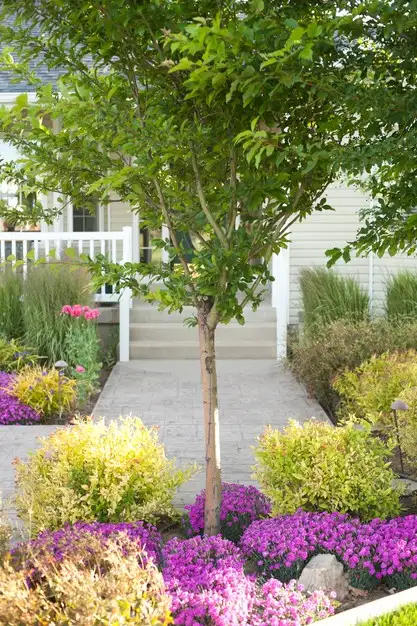The 7 Best Home Improvements for $500 or Less
When it comes to upgrading our homes, there seems to be a never-ending list of things to do. There are the upgrades we’d love to make, like buying new furniture or replacing countertops. And then there are the things we have to fix, like inefficient appliances or a leaking roof. But there are a whole range of inexpensive improvements that don't take much effort but can go a long way toward increasing your enjoyment of your home—and adding to its value too.
Here are 7 such upgrades you can make for less than $500.
1. Increase curb appeal
Even if you’re not planning on selling your home, curb appeal is important. For you, that might mean pressure-washing the driveway (rent one for about $100 per day), repairing broken stairs, or updating your mailbox (anywhere from $50 to $200, depending on style). Sometimes upgrading curb appeal is simply a matter of spending time in the yard and getting your hands dirty by edging the lawn, trimming hedges, or pulling weeds. To keep costs down, plant perennials that keep their greenery all year long and invest time in maintaining your garden tools so you don’t have to purchase new ones.
Read more about budget-friendly curb appeal projects
2. Fix the front door
Your front entrance can say a lot about your home. Upgrading to a high-end fiberglass door can cost more than $1,000, but you can get a whole new look for a lot less simply by adding new hardware and a fresh coat of paint. Installing a new doorbell (kits cost about $50 to $100) or updating the lighting (anywhere from $25 to $100) are also inexpensive fixes that can add instant appeal to the front entry. Pair your newly painted door with a clean doormat ($20) or fresh pot of flowers, and you'll have a whole new entrance for under $500.
3. Repair interior walls and paint
If your walls are a standard height, it’s easy to make simple repairs like patching holes or sanding. It’s also fairly easy to prime and paint your walls, which can instantly upgrade the look of any room. You'll need to buy paint and primer (most brands start around $30 per gallon) plus painter’s tape, brushes and rollers. (Read this to learn more about how to budget for your painting project.)
Painting can get complicated and expensive if you need to repair a significant amount of drywall, remove mold, or have really tall ceilings, so always consult a professional if you feel you might be in over your head.
4. Update lighting and change bulbs
The lighting fixtures in your home are like jewelry on an outfit—they can instantly add pizzazz or look dated. Switching out a chandelier or sconce is a fairly easy, budget‐friendly project. Shop big-box stores for inexpensive pendants, or ask about floor sample sales at retail outlets. Plan on spending at least $200 for a large fixture, about $100 for a bathroom vanity light, and $100 or less for a wall sconce. If you’re on a tight budget, consider using the fixtures you already have but updating them with a coat of spray paint, a new light shade, or a dimmer switch. To make sure you’re really adding value, switch to energy efficient bulbs like LEDs (about $7 for a 60W equivalent) or CFLs (about $9 for a 60W equivalent) bulb. Although both are more expensive than an incandescent bulb, they last longer and require less energy.
5. Install new toilets
Your motivation for buying and installing a new toilet may be for aesthetic reasons, but newer toilets can also save you money. Toilets installed prior to 1995 use as much as 6 gallons of water per flush; newer WaterSense models use as little as 1.2 gallons.
Over time this can represent thousands of gallons of water you won’t have to pay for. Additionally, older toilets are more likely to leak, wasting even more water and money. A slowly running toilet can waste as much as 200 gallons of water a day. Replacing a toilet (about $100‐$200) isn't hard for an experienced DIYer. But call the plumber if you have other leaks in the bathroom or kitchen; getting them fixed will save you water and money.
6. Maintain your mechanics
Just like maintaining a car, regularly having your appliances and mechanical devices inspected and tuned up can save you lots of money in the long run. Major repairs or replacements can run into the thousands, but a simple check up might be as little as $100. Ask your serviceperson to let you know about any special customer care programs. Sometimes long-term customers are rewarded with free inspections or discounted servicing. (Thinking about DIY appliance repair? Read this first.)
7. Monitor energy usage
There are many smart-home devices on the market aimed at letting you get to know your home habits and helping you save money on energy or utility costs. Devices like Iris (Comfort & Control kit is $80) can help you regulate the temperature of your home and alert you to any unexplained changes. Add-on devices like the Utilitech Water Leak system ($30) can alert you to water leaks. Ultimately these devices help you save money on your energy and utility bills and keep you from expensive repairs down the line.
Anne Reagan is editor-in-chief of Porch.com.
Read more:
How to Budget Your Painting Project
5 Budget-Friendly Updates to Boost Your Home’s Curb Appeal
Fix Leaks & Start Saving Money
